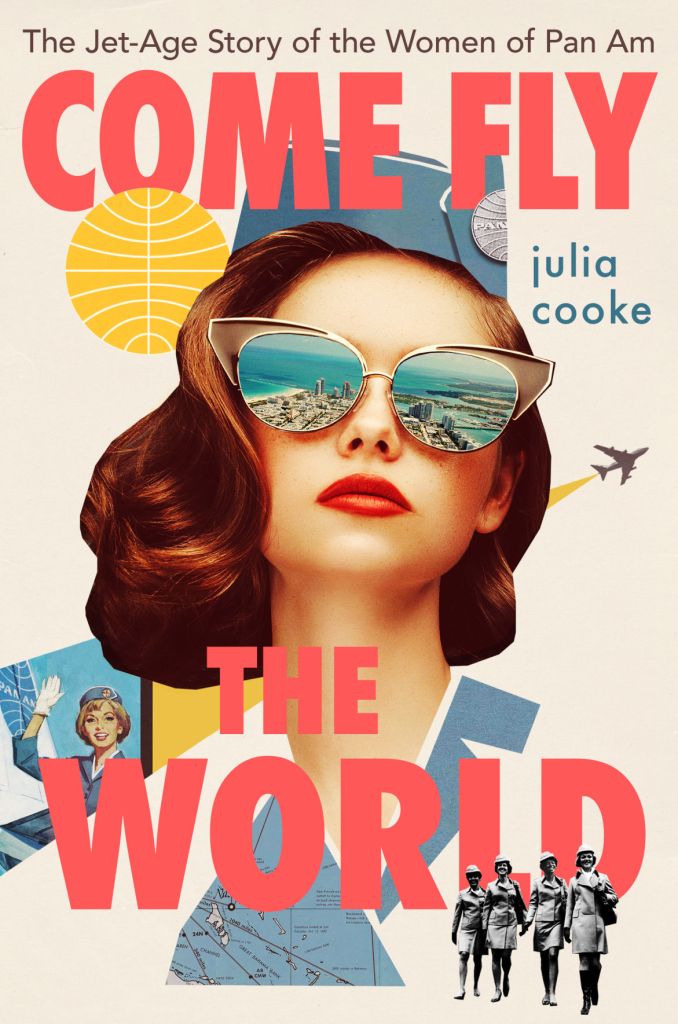Book review: ‘Come Fly the World’
Published 12:00 am Sunday, April 18, 2021

- BOOK REVIEW
“Come Fly the World: The Jet-Age Story of the Women of Pan Am” by Julia Cooke. Houghton Mifflin Harcourt. 266 pp. $28. Review provided by The Washington Post.
Even before the pandemic crippled the airline industry last year, whatever sheen of romance international air travel once held had long worn off. Blame the shrinking seats, the expanding fees, the never-ending security lines. As swift and accessible – and frankly, miraculous – as flying had become in the 21st century, it was entirely uncontroversial to find it miserable, too.
But after a year of severe restrictions on travel, it’s easy to miss those small miseries. So a new book looking back at the height of the jet age offers more than one delicious flavor of escapism. Focusing largely on the 1960s, “Come Fly the World: The Jet-Age Story of the Women of Pan Am” remembers a time when air travel was synonymous with luxury and glamour – not just for passengers but also for the women hired to wait on them.
Julia Cooke, the daughter of a Pan Am executive, builds “Come Fly the World” around interviews with five women: Clare, Karen, Lynne, Hazel and Tori; four White, one Black; four American, one Norwegian. For some, working as a Pan Am stewardess was always the dream; for others, it was the backup plan that kicked in when their visions of a career in biology or the Foreign Service faded. For all of them, working for Pan Am was transformative.
In the earliest days of commercial air travel, cabin attendants were exclusively male, but by the 1950s growing competition among carriers changed that: “Each airline tried to convince customers that it had the highest level of luxury and service, and the women who served a predominantly male clientele became a particular selling point,” Cooke writes. Pan Am – at the time, the only American airline to fly exclusively international routes – had a particular reputation for sophistication to maintain. “We must add to (our excellence) ‘a new dimension’ – that is, emphasis on what pleases people. And I know of nothing that pleases people more,” chief executive Najeeb Halaby would later explain, “than female people.”
Pan Am’s recruiting strategy focused on enticing restless, ambitious women into its ranks. “How can you change a world you’ve never seen?” one job ad read. What Pan Am promised was a kind of education, and, in Cooke’s telling, it attracted women who valued the same. Throughout the 1960s, a full 10% of Pan Am stewardesses had attended graduate school – a stunning figure at a time when only 6% to 8% of American women even held a college degree. But still, looks were key.
Training included lessons in grooming as well as instruction in aviation history and emergency procedures. Would-be stewardesses were taught about the workings of brake spoilers, vortex generators and ailerons; shown how to prepare Malayan chicken curry; and quizzed on cocktail recipes.
Once installed as a Pan Am stewardess, a woman suddenly had access to an endless parade of new experiences: dinner parties in Monrovia, nights at the Phoenicia InterContinental hotel in Beirut, holidays in the Philippines, shopping in Paris. A Pan Am stewardess might find herself evading the KGB in Moscow and trading recipe cards for piroshki with her Aeroflot counterparts. Or calming a cabin full of passengers as Ghanaian gunmen abducted Guinean ministers from a flight in Accra.
This lifestyle had a price. Pan Am conducted monthly weigh-ins of its staff and required a woman to seek her manager’s approval if she wanted to change her hairstyle. Marriage or pregnancy were nonnegotiable, career-ending conditions – women who embarked on either often hid them for as long as possible. As the 1960s turned into the 1970s, stewardesses began bringing grievances to the Equal Employment Opportunity Commission and, eventually, winning their cases. But these victories came slowly.
It would be a mistake, however, to see the story of the women of Pan Am as simply a tale of 1960s female empowerment. The most startling chapters of “Come Fly With Me” center on Pan Am’s role during the Vietnam War, when the airline offered to ferry troops from Saigon across Asia for relaxation at a deep discount to the government. Stewardesses became nurses and counselors to injured and traumatized soldiers, witnesses to events at direct odds with the U.S. government’s narrative about Vietnam. At the war’s end, it was these slim, unflappable, worldly women who were responsible for ferrying hundreds of young children out of the country during the controversial Operation Babylift. Theirs was far more than a front-row view of history. “The world is waiting,” Pan Am’s want ads had promised. “See things, do things, learn things.” And so they did. It was, after all, what they signed up for.
– Reviewed by Mythili G. Rao, who is a journalist, audio producer and book critic based in London.






